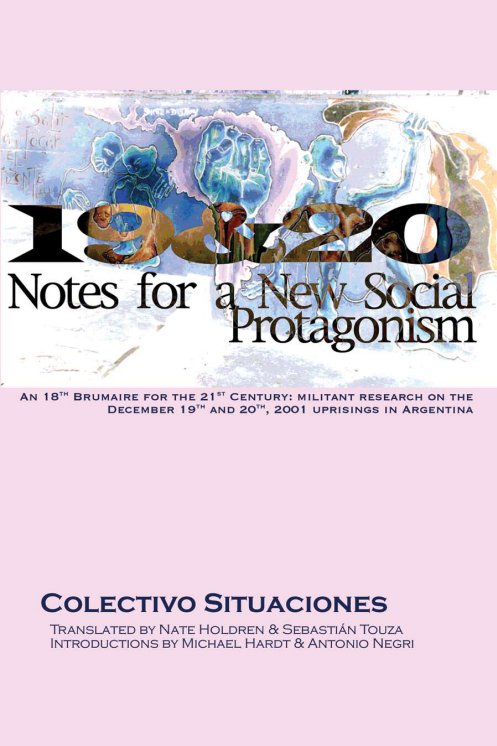Gene Sharp: From Dictatorship to Democracy: A Conceptual Framework for Liberation (1993/2011) [28 languages]
Filed under book | Tags: · democracy, politics, protest, revolution, social movements

From Dictatorship to Democracy is a serious introduction to the use of nonviolent action to topple dictatorships. Originally published in 1993 in Thailand for distribution among Burmese dissidents, this booklet has since been translated into many languages and spread worldwide.
Publisher Albert Einstein Institution, Boston, MA
ISBN 1880813092, 9781880813096 (English, 4th edition)
From Dictatorship to Democracy 2.0 (analysis by International Relations and Security Network, February 2012)
a short description of the history of this book (PDF, English)
author’s wikipedia page
publisher
google books
PDF (Afan Oromo, 2011)
PDF (Amharic, 2007)
PDF (Arabic, 2004)
PDF (Azeri, 2004)
PDF (Belarusian, 2005)
PDF (Burmese, 1994)
PDF (Chin/Burmese, 2001)
PDF (Simplified Mandarin/Chinese, 2004)
PDF (Traditional Mandarin/Chinese, 2004)
PDF (English, 1993/2010), audio book
PDF (Farsi, 2004)
PDF (French, 1993/2009)
PDF (German, 1993/2008)
PDF (Indonesian, 1997)
PDF (Italian, 2011)
PDF (Jing Paw/Burmese, 2001)
PDF (Karen/Burmese, 2001)
PDF (Khmer/Cambodian, 2005)
PDF (Kyrgyz, 2004)
PDF (Mon/Burmese, 2001)
PDF (Pashto, 2008)
PDF (Russian, 2005)
PDF (Serbian, 1999)
PDF (Spanish, 2003)
PDF (Tibetan, 2006)
PDF (Tigrigna, 2006)
PDF (Ukrainian, 2004)
PDF (Vietnamese, 2005)
Colectivo Situaciones: 19 & 20: Notes for a New Social Protagonism (2002/2012)
Filed under book | Tags: · argentina, politics, protest, social movements

An 18th Brumaire for the 21st Century: militant research on the December 19th and 20th, 2001 uprisings in Argentina
In the heat of an economic and political crisis, people in Argentina took to the streets on December 19th, 2001, shouting “¡Qué se vayan todos!” These words – “All of them out!” – hurled by thousands banging pots and pans, struck at every politician, economist, and journalist. These events opened a period of intense social unrest and political creativity that led to the collapse of government after government. Neighborhoods organized themselves into hundreds of popular assemblies across the country, the unemployed workers movement acquired a new visibility, workers took over factories and businesses. These events marked a sea change, a before and an after for Argentina that resonated around the world.
Colectivo Situaciones wrote this book in the heat of that December’s aftermath. As radicals immersed within the long process of reflection and experimentation with forms of counterpower that Argentines practiced in shadow of neoliberal rule, Colectivo Situaciones knew that the novelty of the events of December 19th and 20th demanded new forms of thinking and research. This book attempts to read those struggles from within. Ten years have passed, yet the book remains as relevant and as fresh as the day it came out. Multitudes of citizens from different countries have learned their own ways to chant ¡Qué se vayan todos!, from Iceland to Tunisia, from Spain to Greece, from Tahrir Square to Zuccotti Park. Colectivo Situactiones’ practice of engaging with movements’ own thought processes resonates with everyone seeking to think current events and movements, and through that to build a new world in the shell of the old.
Originally published in Spanish as 19 y 20: Apuntes para el nuevo protagonismo social, Argentina, April 2002
Translated by Nate Holdren & Sebastián Touza
Introductions by Michael Hardt & Antonio Negri
Publisher Minor Compositions, an imprint of Autonomedia, 15 January 2012
ISBN 978-1-57027-216-5
274 pages
PDF (updated on 2014-9-14)
Scribd
Eric Kluitenberg: Legacies of Tactical Media: The Tactics of Occupation: From Tompkins Square to Tahrir (2011)
Filed under book | Tags: · activism, culture jamming, media activism, media art, politics, protest, social movements, tactical media

Tactical Media employ the ‘tactics of the weak’ to operate on the terrain of strategic power by means of ‘any media necessary’. Once the rather exclusive practice of politically engaged artists and activists, the tactical appropriations of media tools and distribution infrastructures by the disenfranchised and the disgruntled have moved from the margins to centre stage. The explosive growth of mass participation in self-mediation incountless blogs, video sharing platforms, micro-blog ging, social networking has created an unprecedented complexity in the info-sphere.
While this frenzy of media activity has been heralded as the catalyst of the new democratisation movements in North-Africa and the Middle-East, the anti-austerity/precarity movements in Southern Europe and the UK, and the recent #occupy movements in the US and Northern Europe, its increasingly intransparent complexity combined with the post 9/11 ‘crash of symbols’ has thrown its political efficacy into question. The demise of WikiLeaks as the crown jewel of on-line whistle-blowing has added to a thoroughly opaque picture.
More than ever tactical media operators require effective instruments to the create tactical cartographies they need to navigate the hybrid realities they are immersed in. This notebook traces the legacies of tactical media to begin creating these hybrid cartographies.
Publisher Institute of Network Cultures, Amsterdam, 2011
Network Notebooks 05
ISBN/EAN 978-90-816021-8-1
57 pages

